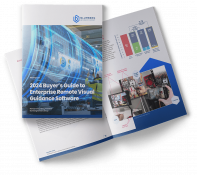Help Lightning Blog
How To Increase Your Call Center’s First Call Resolution Rate

The question of improving your first call resolution rate is a complicated one, because this critical customer satisfaction metric doesn’t take place in a vacuum. And if you have a low first call resolution rate, the root cause can appear elusive at first: is it an issue with your agents? An operations problem? A deeper product issue?
Despite the potential complexities associated with improving your first call resolution rate, it’s a metric well worth investing in bettering, thanks to the profound knock-on effects it can have on your annualized revenue and customer retention rates.
So that being said: what are 3 sure-fire ways you can increase your first call resolution rate over the next quarter? That’s what we’ll be diving into now.
Measure your first call resolution rate
How can you fix something you don’t fully understand?
Firstly, it’s important to understand what your first call resolution rate is. Essentially, out of all the customers who call, what percentage have their issue resolved on the first call?
According to Metric Net, an average resolution rate stands around 74%, while the lower end trends toward the 40% mark. Clearly, if less than half of your customers aren’t getting their needs met on the first call, this is a cause for concern, especially given how impactful one negative interaction can be. A Zendesk study found that respondents who had a bad customer service experience where 50% more likely to share this on social media than those with a good experience).
And it’s not just the stick your business could get from a low first call resolution rate: you may miss out on the carrot too, since – according to Sales Cycle – 42% of customers said they bought more after a good customer service experience (in comparison to the more than 50% who reported they never bought from a company again after a bad experience).
The takeaway here: measure your first call resolution rate, and then go beyond the static number you end up with.
Yes, you may resolve 70% of calls on the first go, but is the remaining 30% attributable to a problem that has a quick-fix?
When your agents can’t resolve a call, make it a habit that they report in some sort of CRM software why they weren’t able to fix the problem.
Once you categorize where things are going wrong, you can begin to identify and troubleshoot root causes that keep cropping up.
Empower your representatives
A big barrier to resolving customer issues (and a primary grievance for those that call representatives only to find they can’t be helped that day), lies in representatives being too limited in what they can do for customers over the phone.
So how can you make sure your agents are in the best possible position to help? You can empower them through increased knowledge and understanding.
Empowering through knowledge
Software that captures customer history data is an excellent way to make sure agents don’t waste time asking customers to repeat what led up to this point. Making sure that all interactions via chat bot, previous phone calls, order history, and so on are all captured are extremely important in enabling your representatives to see the whole picture, right off the bat.
Empowering through increased understanding
Now, sometimes your agents can’t help because either they – or a customer – is unable to sufficiently describe and troubleshoot an issue over the phone. This roadblock is most prevalent in businesses with complex technology products, or even B2B businesses with industrial equipment, or other specialized technologies that require enhanced knowledge to navigate.
This is where softwares like remote first service become incredibly useful for: 1) expediting customer resolution times, and 2) improving first call resolution rates overall.
In the case of remote first service, because customers and agents share a merged reality in which both parties can point, draw, freeze, and annotate on the screen, it is much easier for customers to communicate their problem, and fix it on the spot with guided assistance. This is all possible with an augmented reality video call.
With this increased insight on the issue at hand, agents are much better able to understand and expediently resolve a customer’s problem and thereby tie up all loose ends on the first call: ultimately improving your business’ first call resolution rate and average handle time to boot.
Motivate your team
Happy customer service reps are effective customer service reps. And don’t just take our word for it. Harvard Business Review reports that there’s “a strong statistical link between employee reported well-being on Glassdoor and customer satisfaction.”
So why might this be?
Probably because agents that are motivated to successfully close out a call with a happy customer on the other end of the line are happy themselves. They feel their work is valued and important, and they are rewarded for excellent performance.
As such, we recommend making first call resolution part and parcel of the metrics used to evaluate your agents’ performance, offering tangible incentives for improving their scores. This directly aligns employee goals with organizational goals, and presents a recipe for long-term success.
Get in touch to request a free, no obligation demo to learn about how Help Lightning’s remote first service technology could drive results for your business.












